How To Know If Someone Blocked You On iMessage? 5 Secret Hacks!
Apr 16, 2025

Apr 16, 2025

Apr 16, 2025

Apr 15, 2025

Apr 11, 2025

Apr 11, 2025

Apr 11, 2025

Apr 08, 2025

Mar 29, 2025
Sorry, but nothing matched your search "". Please try again with some different keywords.

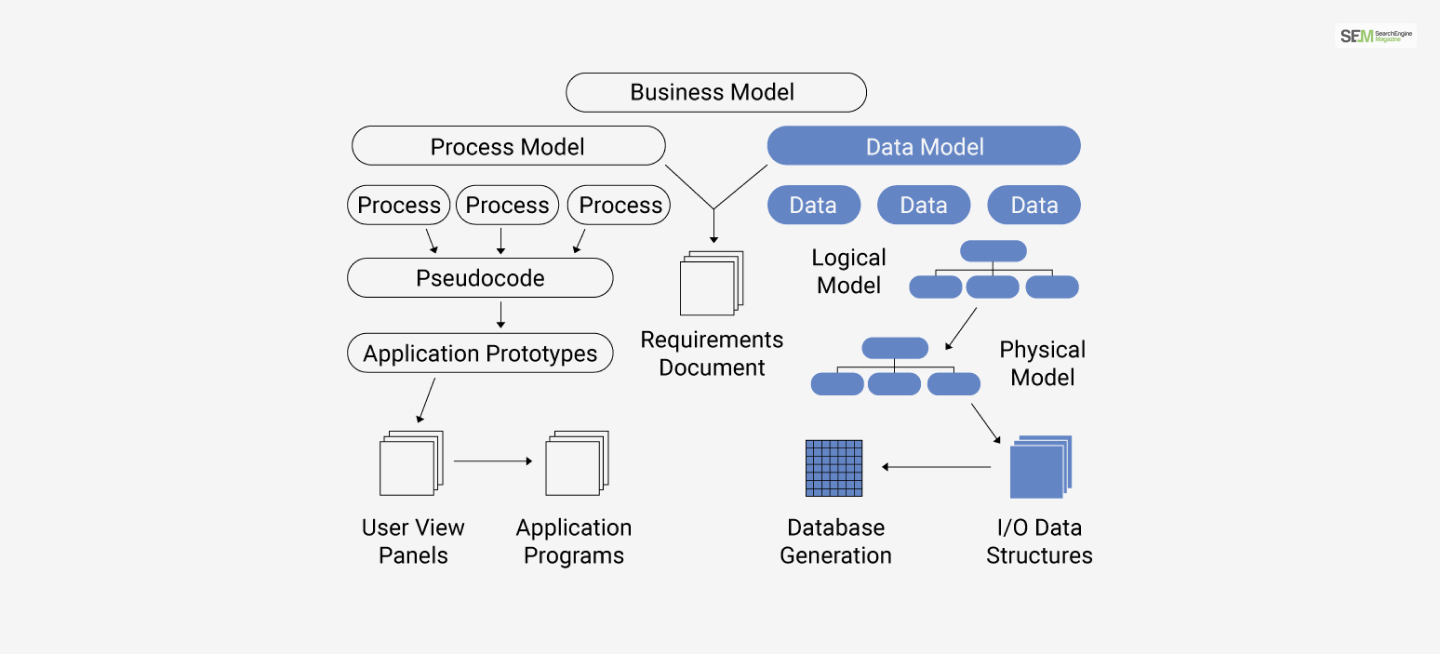
In today’s data-driven world, effective management and utilization of information are essential for businesses. This is where data modeling comes into play.
Whether you’re a business owner, a data analyst, or a software developer, understanding why this is essential for organizing, analyzing, and making informed decisions based on data.
In this guide, you will get to learn more about data modeling, exploring its meaning, types, process, and benefits. In addition, you will also see its vital role in modern information management.
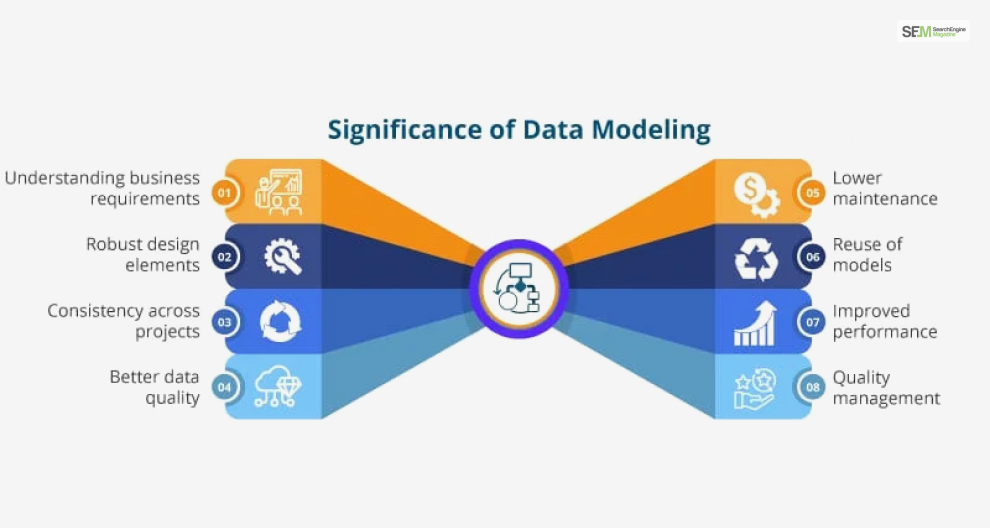
At its core, data modeling is the process of creating a visual representation of data structures to define how data is stored, accessed, and related within a database or information system.
Think of it as creating a blueprint for organizing and understanding data, much like an architect designs blueprints for constructing a building. Data models provide a clear and standardized way to represent complex relationships, ensuring data integrity and consistency.
If you wish to start your own digital marketing agency, you will need this “blueprint” by your side.
Before we delve into Power Bi data modeling, you must know about the core data models. There are three primary types of data models, each serving a specific purpose. They are:
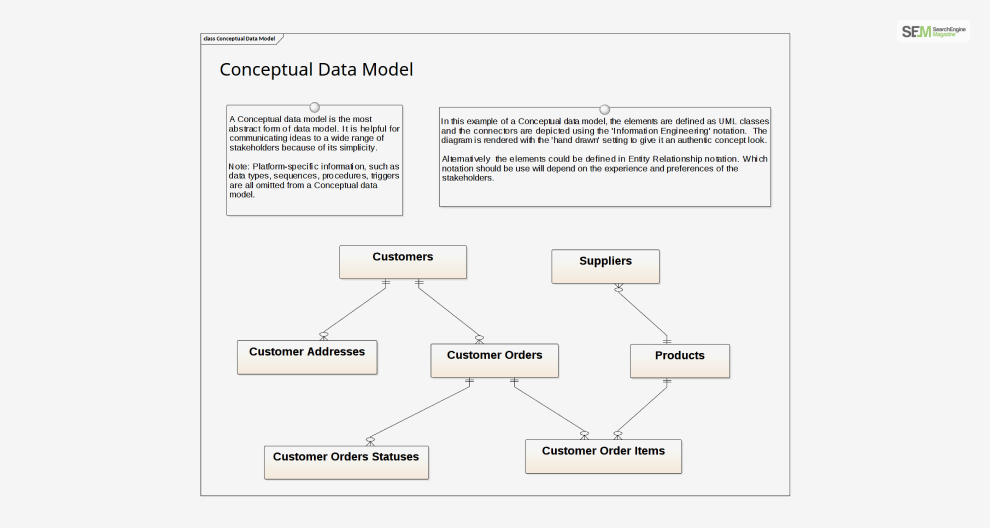
This high-level model focuses on the overall structure and relationships of data elements without delving into technical details. It provides a strategic view that helps stakeholders understand business requirements and processes.
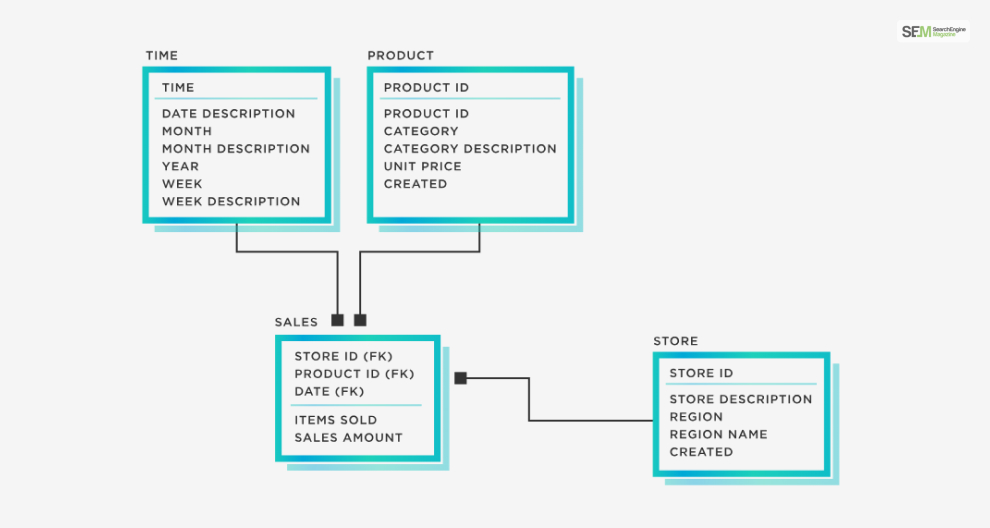
The logical data model delves deeper into the specifics of data elements, attributes, and relationships. It abstracts from technical implementation and serves as a bridge between business requirements and database design.
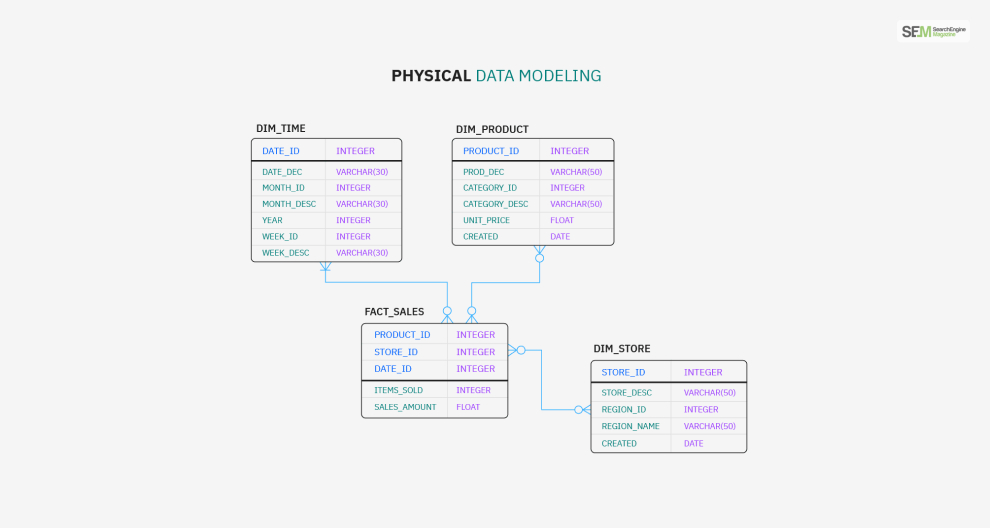
This model represents the actual implementation of the database on a specific technology platform. It includes details such as data types, indexes, keys, and other technical aspects required for database creation.
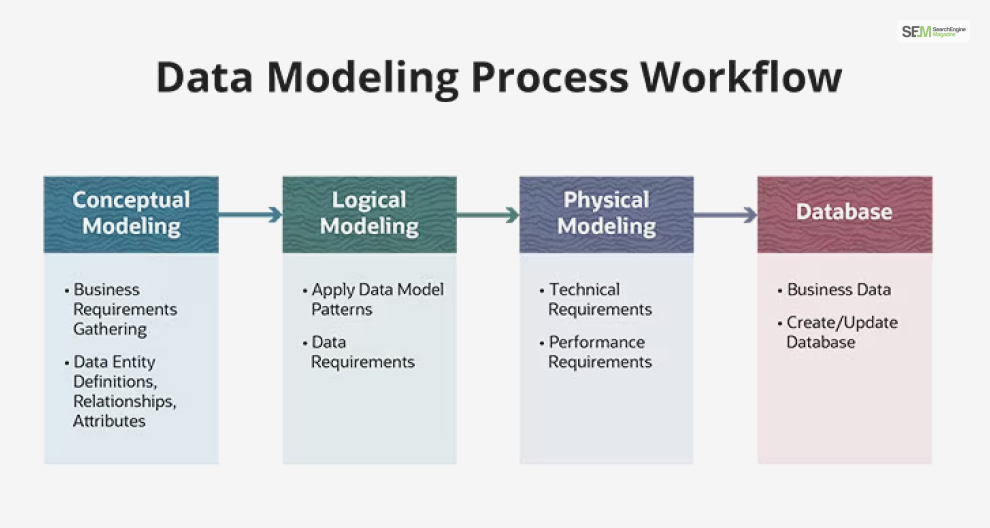
The data modeling in Power Bi process involves several key steps:
First, you must first understand your business needs, objectives, and which premium or free data modeling tools to use. Without an objective in mind, data vault modeling will be unfruitful for you.
Next, create a high-level conceptual data model that illustrates the entities and relationships relevant to the business.
Then, you must translate the conceptual model into a logical data model, defining attributes, keys, and relationships in more detail.
To ensure that you maintain data integrity, you must apply normalization techniques to eliminate redundancy and anomalies.
Noe, you must transform the logical data model into a physical representation by specifying data types, constraints, and optimization guidelines.
Finally, you must collaborate with stakeholders to validate the data model’s accuracy and establish its alignment with business requirements.
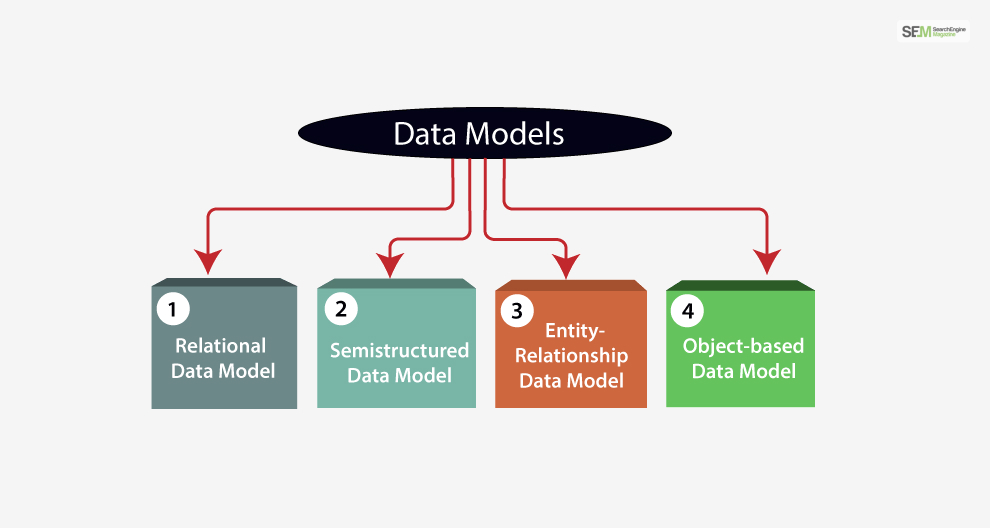
Similar to SQL data modeling and NoSQL data modeling, some of the main types of data modeling are:
This is one of the most common data modeling techniques. It uses entities to represent real-world objects and relationships to depict how these entities are related.
This modeling technique organizes data into tables with rows and columns, and it emphasizes the relationships between these tables.
This modeling technique represents data as objects, each with attributes and methods. It’s particularly useful for complex data structures.
Commonly used in data warehousing, this modeling technique focuses on organizing data for efficient reporting and analysis.
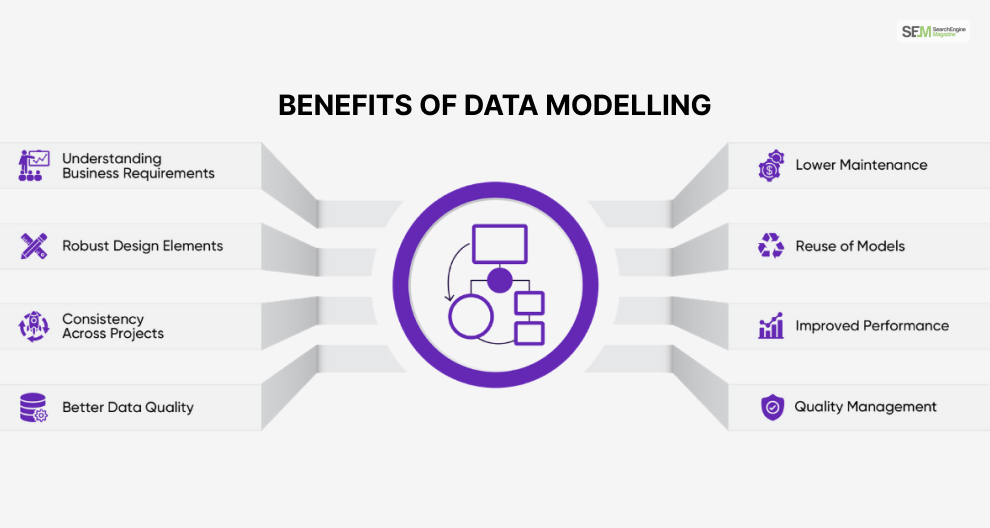
There are various advantages of data modeling that businesses can benefit from, like:
Data modeling ensures that data is organized accurately, eliminating redundancy and inconsistencies.
Well-designed data models optimize data retrieval, leading to faster and more accurate queries. This makes gathering data easier than ever before!
Data models provide a visual representation that helps stakeholders understand data relationships and business processes more effectively.
Clear data models empower organizations to make informed decisions based on accurate and relevant information. This is important at the administrative, managerial, and directorial levels of the organization.
Data models lay the foundation for scalable database structures that can adapt to changing business needs. Therefore, when a business scales, your data modeling process will scale as well.
Maintenance and updates are simplified as changes can be made based on the data model’s structure. This makes database management a lot easier.
Data modeling plays a crucial role in the field of Search Engine Optimization (SEO) by providing insights, structure, and organization to the vast amount of data involved in optimizing websites for search engines.
Here’s how data modeling is used in SEO:
Data modeling can help an SEO consultant organize and analyze keyword data effectively.
By creating data models that categorize keywords based on relevance, search volume, competition, and user intent, SEO experts can prioritize keywords that have the highest potential for driving organic traffic.
These models also help in identifying long-tail keywords and understanding user behavior, aiding in content creation and optimization strategies.
Data modeling is used to structure and organize content on websites to align with search engines’ algorithms and user preferences.
SEO freelancers can identify patterns and trends that guide content optimization efforts by analyzing data related to user behavior, search queries, and content engagement.
These insights help in creating content that resonates with the target audience and improves search engine visibility. This is essential for optimizing a landing page using On page and off-page SEO.
Data modeling assists in identifying high-quality link-building opportunities.
SEO professionals can create models that prioritize link-building strategies. This will be done by analyzing data related to domain authority, page relevance, backlink profiles, and different types of backlinks. Therefore, you can say that this helps create high-quality backlinks.
These models help in identifying authoritative websites for outreach and collaboration, contributing to improved search rankings and domain authority.
Data modeling is used to enhance local SEO efforts.
SEO professionals can create models that guide the optimization of Google My Business profiles, local citations, and location-specific content. They can do so by analyzing location-based data, customer demographics, and search trends.
Data modeling is used in technical SEO to understand website structure and performance.
SEO professionals can identify opportunities to improve crawlability, indexability, and user experience using data modeling. They can do so by creating data models that represent site architecture, URL hierarchy, and internal linking structures.
These models guide the optimization of metadata, header tags, and other technical elements like SEO programming.
Data modeling is essential for tracking and reporting SEO performance.
By creating models that capture key performance indicators (KPIs) such as organic traffic, click-through rates, conversion rates, and keyword rankings, SEO professionals can monitor the effectiveness of their strategies.
These models provide actionable insights for continuous optimization and refinement.
Data modeling helps in analyzing competitors’ strategies and performance. By creating data models that compare keywords, content strategies, backlink profiles, and user engagement metrics, SEO professionals can identify areas where competitors excel and adapt their own strategies accordingly.
Data modeling aids in understanding search engine algorithm updates and industry trends.
You can analyze data related to ranking fluctuations, click-through rates, and user behavior by creating data models. These models must be made to identify the impact of algorithm changes and adapt their strategies accordingly.
Data modeling is a foundational aspect of modern information management. It’s the process of creating a structured representation of data that ensures consistency, accuracy, and effective communication.
By understanding the types, processes, and benefits of data modeling, individuals and organizations can unlock the power of their data, making informed decisions that drive business success.
Data modeling in SEO helps professionals make informed decisions based on data-driven insights. It streamlines keyword research, content optimization, link building, technical improvements, and performance tracking, leading to improved search rankings, increased organic traffic, and enhanced user experience.
As search engines become more sophisticated, data modeling continues to play a vital role in shaping successful SEO strategies.
More Resources:
Mashum Mollah is the feature writer of SEM and an SEO Analyst at iDream Agency. Over the last 3 years, He has successfully developed and implemented online marketing, SEO, and conversion campaigns for 50+ businesses of all sizes. He is the co-founder of SMM.
View all Posts
How To Know If Someone Blocked You On iMessag...
Apr 16, 2025
7 Website Design Mistakes That Are Hurting Yo...
Apr 16, 2025
Programmable Dynamic SEO for Location-Based P...
Apr 15, 2025
Google Boba Game: How To Play This Fun Game B...
Apr 11, 2025
Which Is The Best Video Search Engine Of 2025...
Apr 11, 2025

